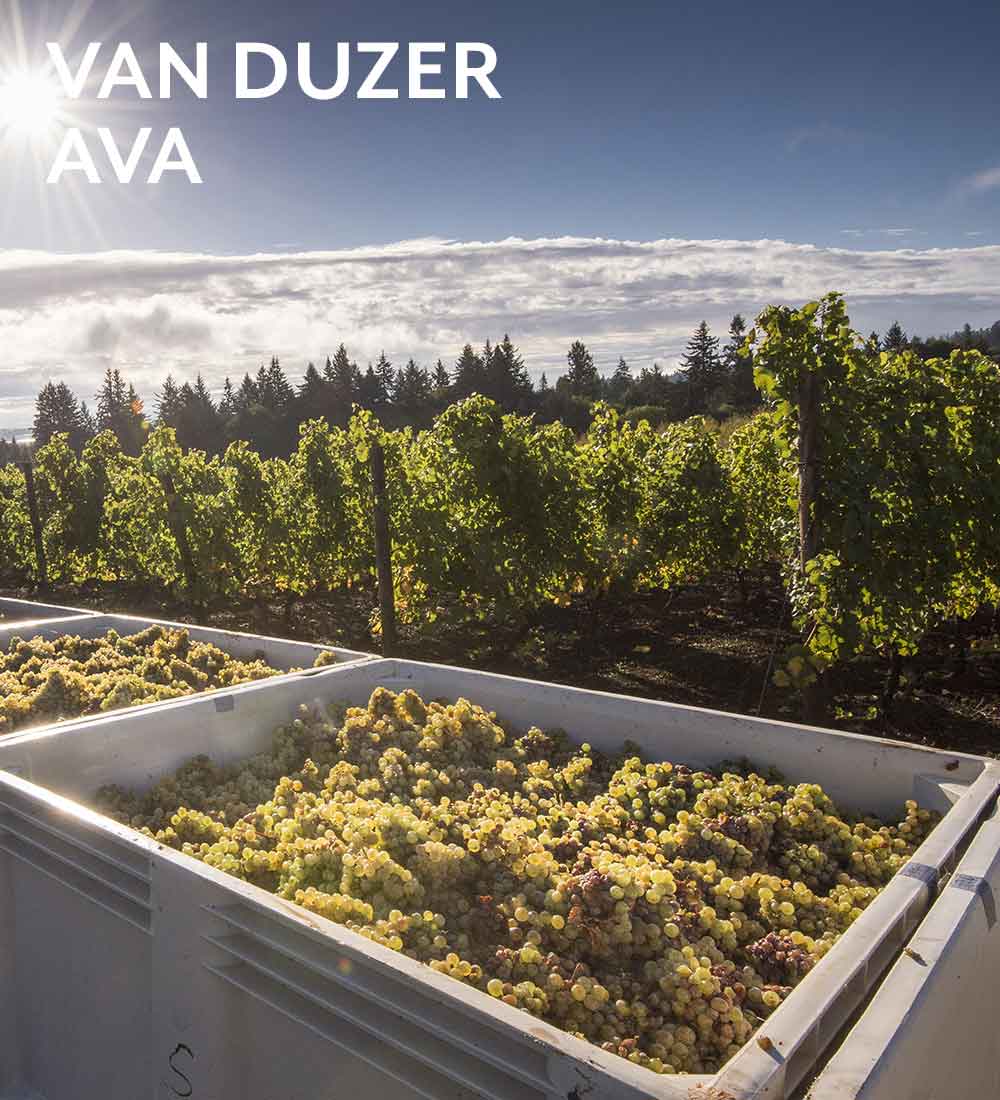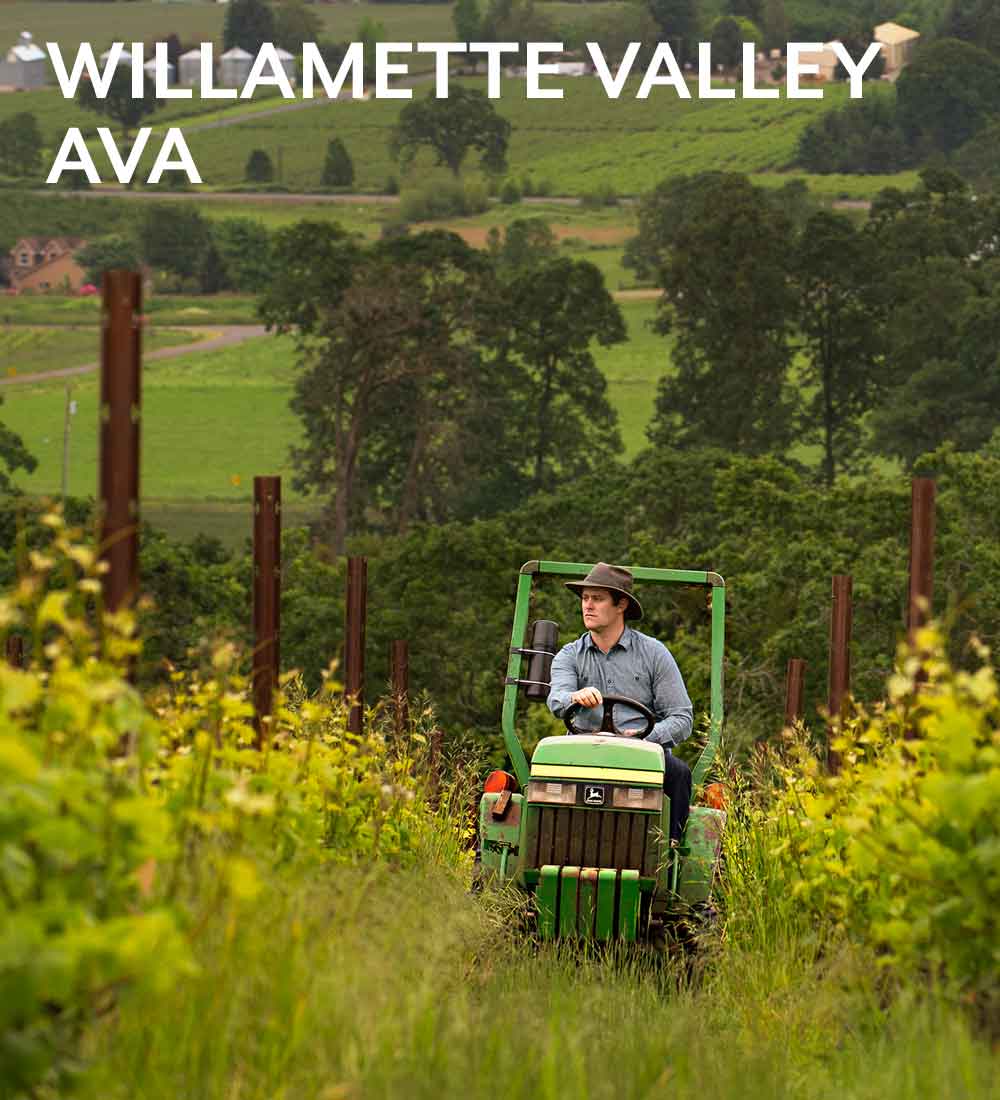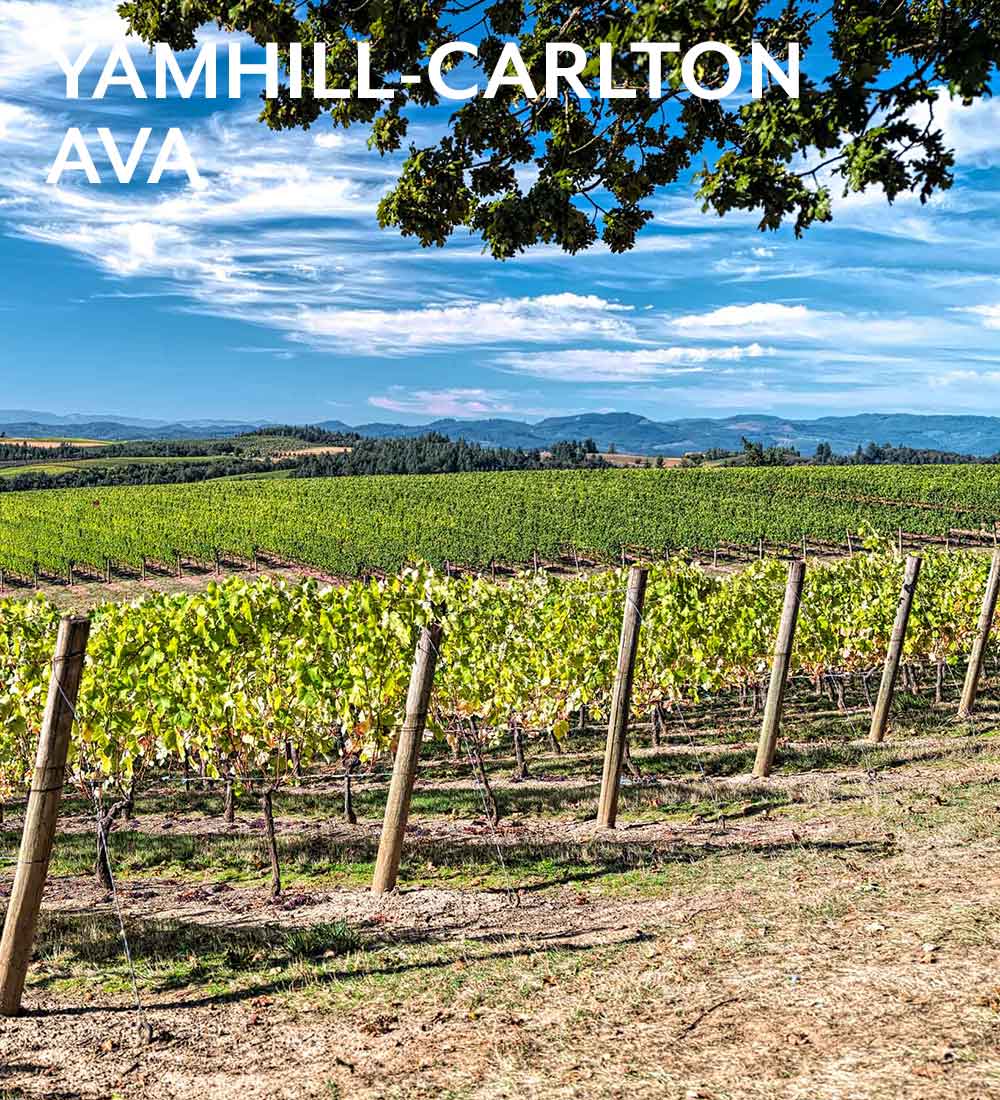Willamette Valley AVAs

No grape variety is as reflective of climatic and site differences as Pinot noir. That is why it demands a cool climate to thrive and why small distance differences in the valley often yield wines of distinctively different character. General attributes that make the Willamette Valley suitable for cool climate grape growing include the protection afforded by the Cascade Mountains to the east, Coast Range mountains to the west and a series of lower hill chains to the extreme north of the valley. Almost all grape growing is done on lower hillsides, avoiding deeply fertile alluvial soils and cooler hilltop mesoclimates.
It is on these hillsides that Pinot noir uniqueness is found and where apparent families of wines urge distinctive American Viticultural Area identification. In 2002, a collaborative action of vineyards and wineries delineated and submitted to the TTB petitions to divide much of the northern part of the large Willamette Valley AVA into six more specific AVAs: Chehalem Mountains, Dundee Hills, Eola-Amity Hills, McMinnville, Ribbon Ridge, and Yamhill-Carlton. The most recent sub-AVA, Van Duzer Corridor, went effect in January 2019.
Chehalem Mountains AVAEST. 2006
The Chehalem Mountains AVA is a single uplifted landmass southwest of Portland in the northern Willamette Valley, extending 20 miles in length and 5 miles in breadth, stretching from southeast to northwest. It includes several discrete spurs, mountains and ridges, such as Ribbon Ridge and Parrett Mountain.
Dundee Hills AVAEST. 2005
The first grapes in the Willamette Valley were planted in the Dundee Hills, and it remains the most densely planted locale in the valley and state.
Eola-Amity Hills EST. 2006
Two of the predominant influences on the characteristics of wines from the Eola-Amity Hills are shallow soils and the Van Duzer Corridor. The soils of the Eola-Amity Hills contain predominantly volcanic basalt from ancient lava flows, combined with marine sedimentary rocks and/or alluvial deposits, making a generally much shallower and rockier set of well-drained soils which produce small grapes with great concentration.
McMinnville EST. 2005
The McMinnville AVA of nearly 40,500 acres sits due west of Yamhill County’s seat, the city of McMinnville. It extends approximately 20 miles south-southwest toward the mouth of the Van Duzer Corridor, Oregon’s lowest coast range pass to the Pacific Ocean.
Ribbon Ridge EST. 2005
The AVA is distinguished by uniform, unique ocean sedimentary soils and a geography that is protected climatically by the larger landmasses surrounding it. Paucity of aquifers forces most vineyards to be dry farmed. Ribbon Ridge is contained within the larger Chehalem Mountains AVA.
Van Duzer Corridor EST. 2019
The Van Duzer Corridor is an anomaly in the Coast Range through which oceanic winds funnel into the Valley, creating a cooling effect that occurs as early as 2:00 in the afternoon. This breeze dries out the vine canopy and decreases fungus pressure, making the area highly attractive for grape growing and supporting sustainable practices by drastically reducing the need for fungus spray. As a phenomenon of wind protection, the grape skins thicken, leading to an abundance of anthocyanins (color) and tannin.
Willamette Valley EST. 1983
A large AVA of 3,438,000 acres (5372 square miles), running from Portland in the north to Eugene in the south, it includes rich alluvial soils on the valley floor, that are great for agriculture but inappropriate for high quality grapegrowing, and a selection of volcanic, loess and sedimentary soils on hillsides of varying mesoclimates. Discover the Willamette Valley AVA
Yamhill-Carlton EST. 2005
North of McMinnville, the foothills of the Coast Range create an AVA of nearly 60,000 acres, centered around the hamlets of Carlton and Yamhill.
Willamette Valley Visitors
Thirst for knowledge?!😋
We are hosting a Red Blends Tasting Saturday June 22nd!
This is the perfect event to explore numerous wines and gain a better knowledge and understanding of the different varieties and tastes🍇
And of course, there will be cheese🧀
Only $30.00 a ticket - call or email us to secure your spot!
It's February, and that means... rosé is on the way, of course! If we can dial up a sunny winter day to go along with it (like this glorious one at furiosovineyard in December) that'd be great.
Their bubbles will definitely do the trick until the still version arrives 🍷🎉
_____
#winetasting #gowinetasting #winecountry #roséallyear #winterinwinecountry #tastingoutdoors #cellarseason #winery #wineanddesign #vineyardviews #winetravel #orwinetrav #traveloregon #oregonwine #oregonwinecountry #willamettevalley #wvwines #dundeehillsava #pdx
Tuscany? No, I'm right here in the Willamette Valley, Chehalem Mountains AVA. Had a lovely time today at alloro_vineyard - great people, beautiful wines (the Riesling was our fave), stunning property and the most gorgeous drive over the mountain with fall color all around. They'll be opening their new tasting room soon and we can't wait to see it.
.
.
.
#vineyard #willamettevalley #willamettevalleywine #chehalemmountainsava #sherwoodoregon #oregonexplored #oregonwine #oregonwinecountry #traveloregon #gowinetasting #fallinoregon #fallinwinecountry #winetravel #orwinetrav #luxurytravel #cntraveler #vineyardviews
We did it, thanks to you! Thank you for helping us reach 1K followers on IG!🎉
.⠀
.⠀
We appreciate your support and look forward to connecting with you. We hope you can visit us for wine tasting sometime.⠀
.⠀
.⠀
We are planning a giveaway to celebrate and will share the details here. Stay tuned.⠀
.⠀
.⠀
.⠀
#nataliesestatewinery #homewithnataliesestate #wvwines #wvcommunity #winetasting #oregonwine #winelover #newbergoregon #keepitlocalnewberg #tastenewberg #pnwlife #bigredwine #wineryfun #sipwithus #gowinetasting #willamettevalley
Who’s visiting Willamette wine country this Memorial Weekend? We’re pouring 8 sparkling wines + our range of spring releases. Sara McMahon will be performing songs from her new album, HWY 47 Tapes starting at 2 on Saturday & Sunday. We’re looking forward to a 3-day weekend of wine and friends 🥂 .
.
.
#pinotnoir #chardonnay #pinotgris #grünerveltliner #müllerthurgau #sparklingwine #oregonwine #oregonwinecountry #kramervineyards #drinkkramer #yamhillcarlton
#wvinbloom #gowinetasting #oregonwinemonth
It is a beautiful time of year for a drive through wine country. Tasting appointments and curbside pick up for Fridays/Saturdays/Sundays 12-6pm taken online (🔗 in bio) or by calling 503.538.2900. Photo courtesy of carolyn_wells_kramer •
•
•
•
#etfillewines #etfille2.0 #wvcommunity #gowinetasting #oregonwinecountry #oregonwine #willamettevalleywine #willamettevalley #willamettevalleywinecountry #pinotnoir #pinotnoirrosé #viognier #fairsingvineyard newbergdowntownwineries wvwines yamhillcarlton
The vines are putting on a fall color show this week. .
.
.
.
.
.
.
.
.
#saffronfields #saffronfieldsvineyard #yamhillcarltonava #yamhillcounty #winetasting #oregonpinotnoir #placestovisit #placestovisitbeforeyoudie #willamettevalley #wine #winetravel #oregonwinetour #fallcolors #greatwine #winecountry #wvwines #gowinetasting #familywineries andreajohnsonphotography
As we move into this two week ‘freeze’, we are reminded of how thankful we are to do what we love and to share that passion with all of you. The ongoing support of our community, friends, and family are what get us through difficult times like these. Thank you!
.
Both Durant Vineyards Clubhouse and Tasting Lodge will be closed for on-site tastings until December 2nd. BUT, we are open for pick-up, and delivering orders over $75, free of charge, to addresses within 50 miles of the farm! Shop our new website from the comfort of home and we will bring your order right to your door!
.
Our nursery, gift shop, lodging, and gardens will remain open with strict social distancing guidelines. We have more than doubled the size of the gift shop to accommodate social distancing (and a lot more products!). Luckily, much of the farm and nursery are outdoors with plenty of space to keep your distance!
.
We will get through this, we will flatten the curve, and we will come out the other side ready for new wine country adventures!
.
Photo from friend of the farm producerbragan - thank you! #dundeehills #durantvineyards #flattenthecurve #willamettevalley #drinkdurant #plantsofdurant #fallcolor #pinotnoir #winetasting #gowinetasting #traveloregon
Has your wine club membership ever been rewarded with a custom etched 3 liter bottle of wine? Last year we drove down to Carlton Oregon for the Ken Wright Cellars Ten Year Anniversary Party. Surprisingly, our membership was rewarded with this bottle of wine. 💥 For real!!! That is the equivalent of 4 bottles of wine. When the hubby first saw this, though, he was a little worried that it had his name on it instead of mine! 😂
Even though this year is a little different without big celebrations, we're so happy for the great memories. Today on the VinoSocial blog, I write about our experience as members. Read more via Linkin.bio and leave a comment about your fave wine club!
#LetsTalkAboutWine #VinoSocial #PinotNoirDay











